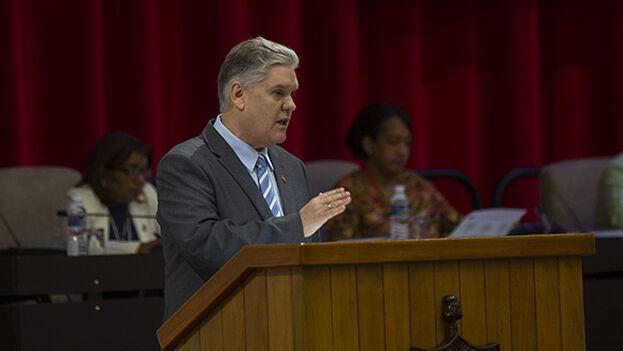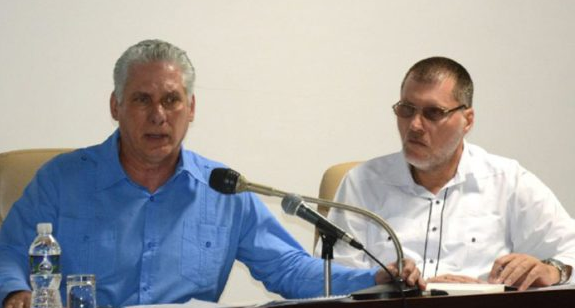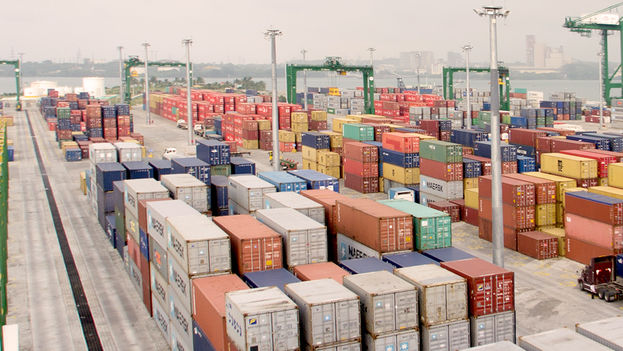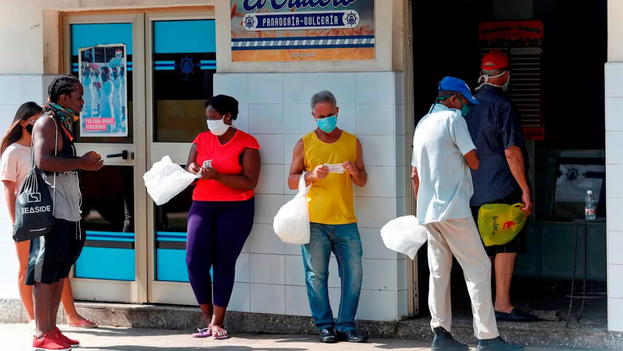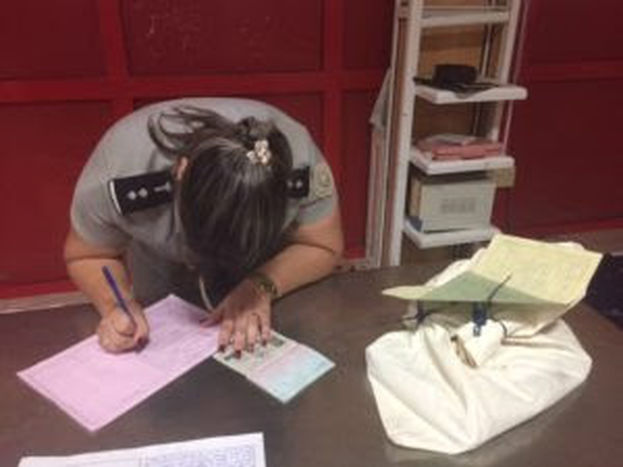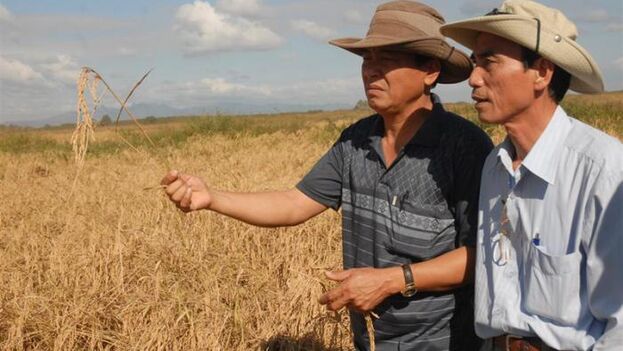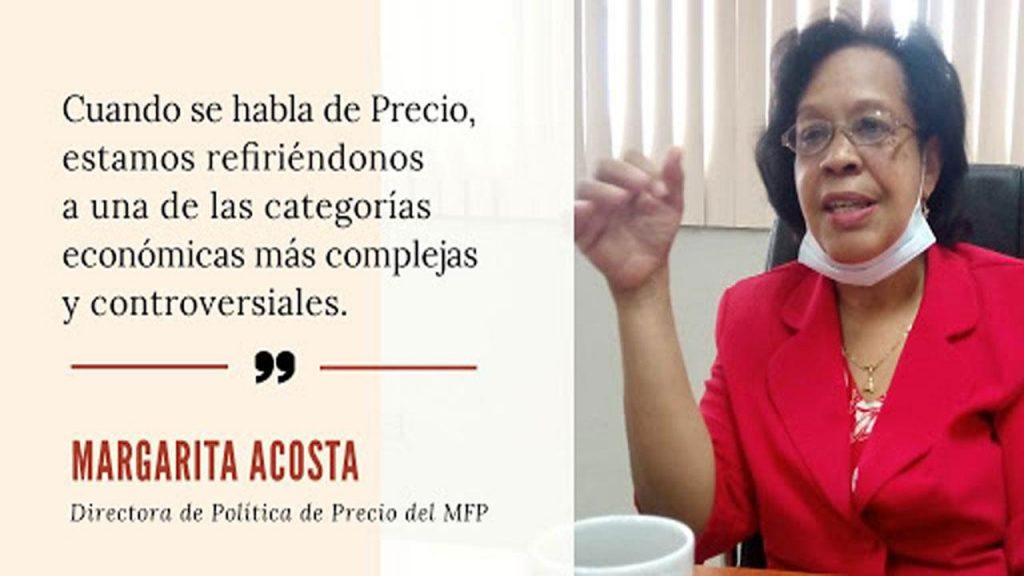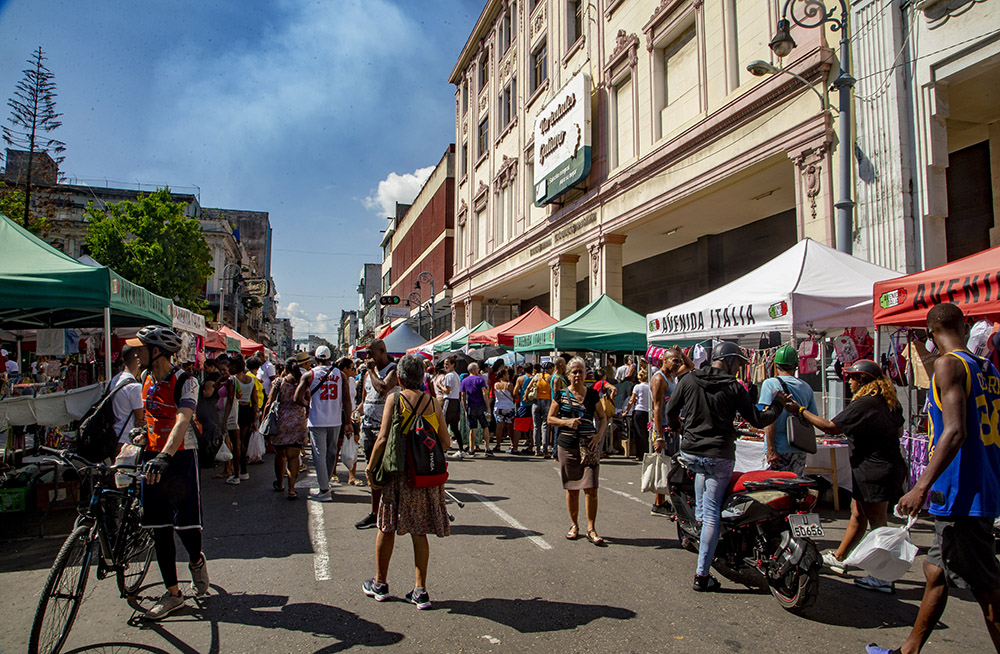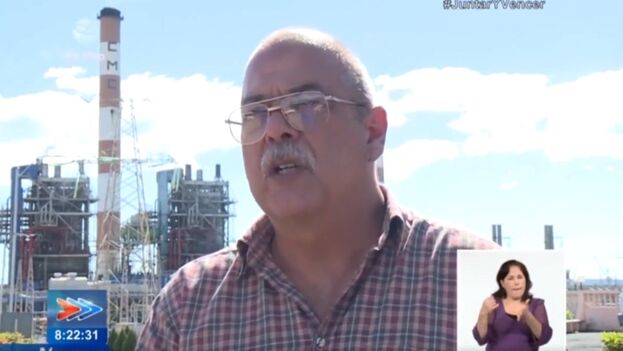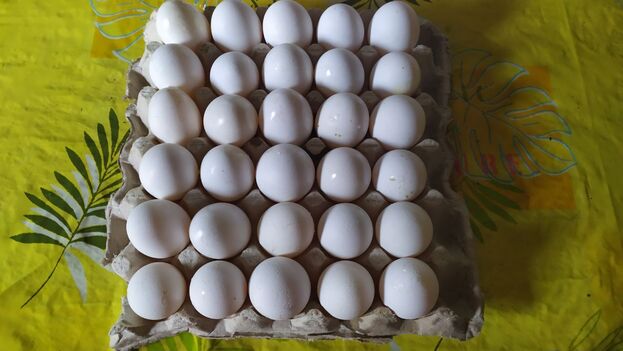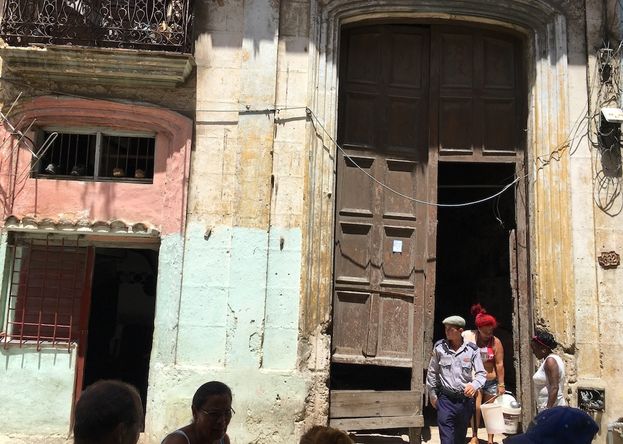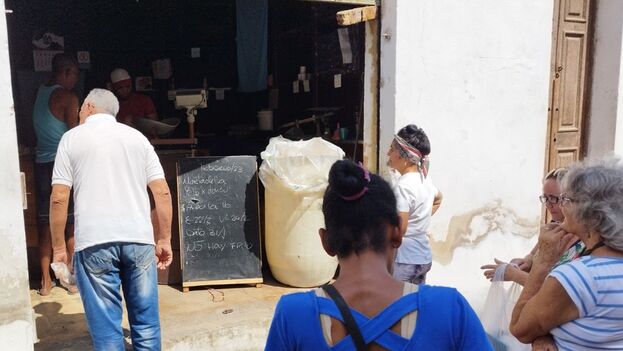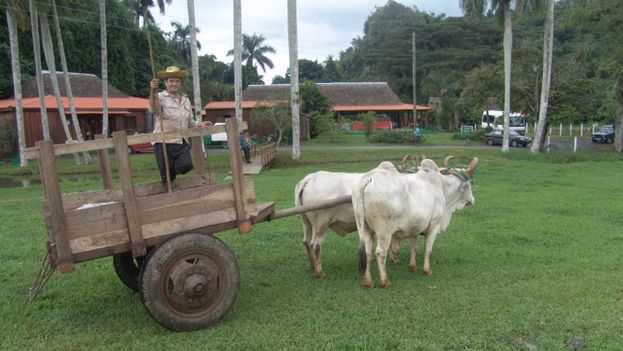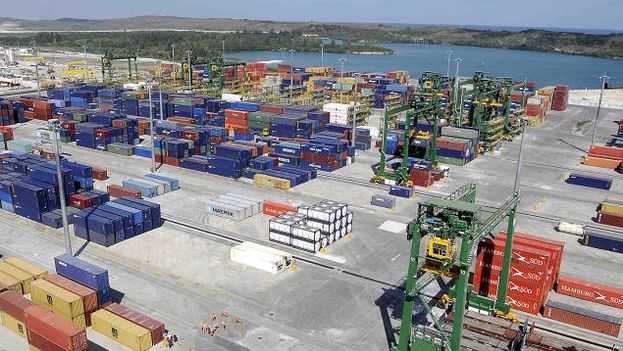The main challenge is self-management. The minister acknowledged that gastronomy has worked mainly through self-management with other actors, not only the micro, small and medium-sized businesses (MSMES) and cooperatives, but also agricultural producers and state companies that produce in the foreign exchange market, but that it is not enough.
The second challenge is the autonomy of entrepreneurs, with the development of first- and second-category gastronomy units, which refer to the popular network of economic line products and fast food. A truncated and beaten-down process.
Any approach makes sense, excepting a market economy, free enterprise and property rights. Communists test different formulas, but they refuse to redirect the Cuban economy to the model that exists in most countries of the world.
Therefore, this communist model of Cuban commerce generates dissatisfaction, which, according to the minister, is concentrated on the quality of services, especially on customer service, which affects the offer and the way the service is provided. If only this were true.
Next, the minister devoted herself to explaining the evolution of the bidding process in the business sector, which aroused so much interest at the time.
In 2014, establishments that offered beauty services, barbershops, hairdressing and some gastronomy were tendered by the MINCIN, but like so many other experiments of the regime, the process was stopped for political reasons. It began again in 2021 with the direct participation of the Municipal Assemblies controlled by the communists, which meant single-party control of the process, while allowing local authorities could bid for specific activities to be developed.
The Communist Party took control, and they say that 78.6% of the goal has been reached, but no information was offered either. The 11 real estate management companies specialized in leasing, which supervise and guarantee the fulfillment of the projects presented, were cited as an example. It’s a really low figure for a country with Cuba’s population.
Surprisingly, the minister was more satisfied with the control carried out by the Party through the Assemblies than by the activity of her own ministry. She pointed out that the key is to make better use of the infrastructure and to work with economic actors, preventing them from doing business in inappropriate places and recognizing the preeminence of the Party throughout the process.
For the maximum reinforcement of control, a Central Commercial Registry was created, responsible for granting permits for business activity. All natural and legal persons who carry out this activity have to register, including the MSMEs.
With these initial forecasts, the minister explained the relationship between the digital transformation process and business activities. It’s hard to believe that in a business sector like the one that exists in Cuba – backward, obsolete and inefficient – computerization or digitization can make any sense, much less the use of electronic payments. But the hierarchical slogan is mandatory, and the minister used it to explain this issue.
First of all, she argued that, as incredible as it may seem, despite not having all the equipment and infrastructure from a technological point of view, workers have even contributed their means and resources to promote this activity. With regard to banking, payment by QR code was conceived, starting with the point of sale terminals or POS in construction materials stores, a difficult process, “because it meant a cultural change in a sector that has been collecting cash for 64 years.”
The minister said at the end of June, before Resolution 111 was issued, which represents the decision to apply banking reform practically all operations, there were 14,369 establishments with the QR code in their business networks, while in September there were 20,762 establishments, and although it grew by 6,000, there are still more needed to ensure this form of payment. The distance that remains to be covered is long and complex, but the minister took the opportunity to give some data. In September, 4.1% of business sales went through electronic payment channels. There is a long way to go.
These are no longer privileged areas with technology but provinces where the commitment and purpose of advancing in electronic collections exist. Thus, the minister recognized that the sales people use their cell phones under a voluntarist principle, although she recognized the existence of errors in the design of the bonus actions, for example.
She spoke about the role of the bodegas as bank agents, a formula in which the bank gives the agent a peso for each transaction. An establishment that has performed 297,000 operations will receive 297,000 pesos, an income not related to its management nor to the offer of products. There were workers who earned from 300 to 2,000 pesos in incentives; this income should become part of the payment system. And she cited some examples, such as in La Rampa, the Plaza municipality where a cash deposit is penalized and an electronic payment is subsidized.
The minister believes that when all payrolls in the country are digitized, a legal norm will require that all natural and legal persons who carry out commercial activity, and who are subject to inclusion in the central commercial registry, provide an electronic payment channel to consumers. And this is not “obligatory.” In the end, all commercial activities of any kind, of any organization, must ensure that there are electronic payment channels. Ordered and commanded.
The minister said that it is about digitizing the greatest amount of financial flow, maintaining cash, but everyone who carries out commercial activity has to guarantee the means of electronic payment, and she said that a deadline will be given to that process. The subjects registered in the commercial registry will have a period of time to validate that they guarantee that means of payment to the population, even in places of difficult access, and all provincial capitals must have conditions for the deployment of what is being proposed.
The minister believes that there is a process of change in mentality and culture, where there are many things that have also changed in business. She pointed out that before, the ’basic basket’ was priced at 20 pesos, but today it costs 180 pesos. In an agricultural market, any product can exceed two pounds and 100 pesos, recognizing the serious inflation problem that exists in the Cuban economy that conditions the success of digitizing trade.
At this point she pointed out that in the digital transformation there are two fundamental areas: one is electronic commerce and the other is e-government.
But payment through these electronic payment channels is not e-commerce. In electronic commerce there is a debt to the population since it recognizes that the state system hasn’t managed to have stability in the virtual stores that began to work during Covid, due to a deficit of products and because the platforms have not been stable. However, it has not been renounced.
In the field of e-government, due to a call from President Díaz-Canel in the National Assembly in December 2018 regarding the computerization of offices, a process began that demonstrates how much it can grow. The process exists in the infrastructure of the Youth Club and in computer contracting infrastructure, and today the Consumer Registry is digitized by 93%. The cases that remain pending sometimes respond to the coincidence between what the citizen’s unique file says and what the Oficoda’s book has, which dates back to 60 years where calligraphy and so on… But the process must be concluded in the coming days to have everything digitized.
This digitization allowed an effective purification; that is, people who leave the country for more than ninety days are discharged from the consumer registry. This registry also provides a digital seal. Today all the Oficodas stamp documents and procedures with a digital stamp.
And she announced that when you have all the digital records and the media, they integrate that database with the database in the Institute of Occupational Safety and Health, to care for people in vulnerable situations and have the procedure online, but means are needed to achieve this goal.
With regard to the multiplication of the centers of population (nuclei) with more than ten people, based on a characterization of those nuclei, the minister said that at the end of September, 20,062 new nuclei have been created. For this it is not a requirement to have housing and is by individual decision. Sixty-two percent of the nuclei could do it or already have. She pointed out that in Pinar del Río and the special municipality Isla de la Juventud, all the planned nuclei were attended to, while the least number of requests were made for the breakdown of these nuclei in the provinces of Cienfuegos, Sancti Spíritus and Santiago de Cuba.
The minister said that for months medical diets have been reviewed with the Ministry of Public Health. The Oficoda system registers the medical diets and then supports the products. She did not recognize the existence of problems in the assurance of medical allowances, based on a legal norm from 1992. That legal norm was reviewed, to eliminate the requirement of renewal of diets for chronic diseases, and its lifelong character was established. She offered the figure of 837,980 consumers: 76% percent of the people who receive a medical diet.
At another point in the Roundtable discussion, the Minister of Internal Trade, Betsy Díaz Velázquez, referred to the population’s basic basket for the month of October and acknowledged that many programs are taken care of by the MINCIN, and the standard family basic basket is monitored daily, from different control mechanisms. However, its operation leaves much to be desired and is the source of many complaints.
She pointed out in this regard that the Minister of Economy, Alejandro Gil, recently explained how much dependence that basket has on imports and the cost of fuel, and she referred to the arrival on September 29 of the first rice shipment for the month of October, which coincided with a deficit of diesel fuel, which fundamentally moves freight transport. All territories, as a priority, said that they would begin a fractional distribution of the rice, with an extraordinary effort. But is it the only rice shipment for the whole month?
A total of 12,187 bodegas in the country, including in mountainous and hard-to-reach areas, have not received the rice, of which 88 are in the province of Granma, due to the rains.
In terms of distribution there is a problem with the oil, which had problems for July and August. The oil that began to be distributed in September is being completed. Today it is pending completion of its distribution in Pinar del Río, Matanzas, Holguín, Santiago de Cuba and Guantánamo. The rest of the provinces have concluded the distribution.
There are also problems with the distribution of sugar, with the decrease of one pound per consumer, which will have an impact in the months of September, October and November. The distribution is being completed in Pinar del Río, Artemisa, Havana, Mayabeque, Camagüey and Santiago de Cuba.
She said that the product of compote is now stabilized, despite many difficulties at the beginning of the year.
As for the grains, which have also had to be replaced by peas, there is a boat currently operating in Cienfuegos, and the completion of distribution for September and October is assured.
She explained that the situation with fertilizers has forced more grains to be imported. In 2018, for example, the normal family basket was covered with domestically produced beans, and released beans were also sold. Today the dependence on imports is total.
Regarding coffee, the Minister said that eight provinces delivered their product to the wholesale system, and distribution is being made to the factories.
As for powdered milk, she said that it is being divided, even with an important contribution of fluid milk. The age groups have been split, prioritizing children up to six months old and those from six months to one year. Although sometimes outdated for a few days, the children’s milk has been guaranteed, but not for those on specialized diets and pregnant women.
The minister said that the most complex products in the basket are still the proteins. Chicken was offered for the months of July and August, and Havana received the August chicken in the month of September.
As for eggs, the distribution varies but is guaranteed for the month of October.
Later, the minister referred to the attention to vulnerable people in the tone of demagoguery. Cuba has received donations of a volume of food that has been distributed to the entire population, including products such as rice, pasta, grains, sugar and in some cases sardines and oil. At a certain point, it was decided to allocate these modules to families and people in vulnerable situations, pregnant women and underweight children.
Therefore, with food donated by friendly countries and the World Food Program, four food distributions have been made that complement the standard family basket to all the population centers of the country from July 2021 to date.
The minister said that in the family care system, more than 56,000 beneficiaries are served, who receive the standard family basket, and 18,000 of them are served by social assistance. That means that people in a situation of vulnerability can receive food in three ways.
As for the school uniforms and the basket, the Minister said that these two programs are very dependent on imports. For uniforms, the primary schools were prioritized, and practically all the fabric for the uniforms is financed, which has allowed the uniforms to be delivered gradually.
The basket has been a little more affected since August 2022, because there has been a deficit of textiles for mattresses. The situation is so serious that Marrero looked for alternatives and put the clothing manufacturers at their maximum capacity to participate with social responsibility in that program and be able to cover the cribs, the mattresses and the basket.
Translated by Regina Anavy
____________
COLLABORATE WITH OUR WORK: The 14ymedio team is committed to practicing serious journalism that reflects Cuba’s reality in all its depth. Thank you for joining us on this long journey. We invite you to continue supporting us by becoming a member of 14ymedio now. Together we can continue transforming journalism in Cuba.
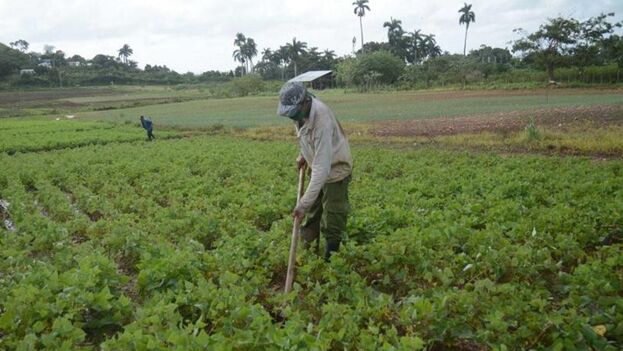
![]() 14ymedio, Elías Amor Bravo, economist, 18 January 2024 — Communists continue to bet on the same policies as always that have shown, again and again, their failure. What is serious is that the State press does the unspeakable by trying to justify them. This is what happened with a joint exercise of control of the possession, use and legality of land and livestock, which, according to them, aims to achieve the transformation of production systems to increase food production. The experiment is carried out in 22 municipalities as part of a pilot program by the General Directorate of Land Control of the Ministry of Agriculture.
14ymedio, Elías Amor Bravo, economist, 18 January 2024 — Communists continue to bet on the same policies as always that have shown, again and again, their failure. What is serious is that the State press does the unspeakable by trying to justify them. This is what happened with a joint exercise of control of the possession, use and legality of land and livestock, which, according to them, aims to achieve the transformation of production systems to increase food production. The experiment is carried out in 22 municipalities as part of a pilot program by the General Directorate of Land Control of the Ministry of Agriculture.
